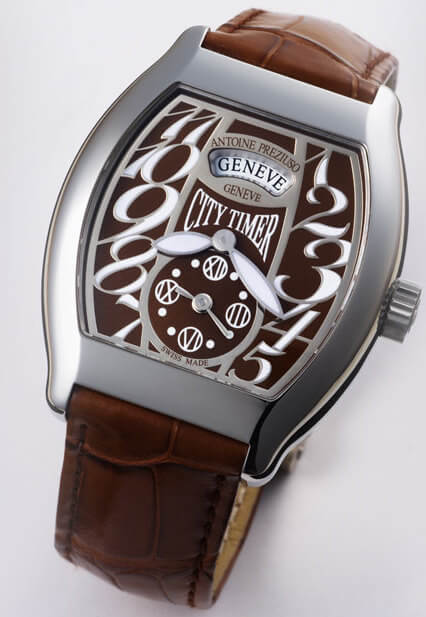Antoine Preziuso: In my view the most important thing about a watch is that it should be passed on from one generation to the next. All my timepieces have to be repairable at any time. This is why the movements have to be extremely reliable, always currently in production, and supplies for them must be available for years to come, even if the parts in question have to be taken from other watches. Take the example of my son, who inherited an Omega watch from his grandfather. When he wanted to repair it he was able to find the necessary parts directly from Omega. This is exactly the type of thing that quickens the watchmaker’s heart and gives new life to a product, with all its affective components. This is my principal message. Nowadays, I know, this approach will always be open to criticism because we incorporate into our watches movements which are much used in the profession, and are inexpensive. But this is to ignore the fact that in our workshop we completely rework these movements and decorate them in order to transform these basic calibres into top quality movements. Sometimes even the experts don’t recognise them. It has to be remembered that each of our movements is placed under the responsibility of a single watchmaker who carries out all the tasks which go into enhancing the value of the watch.
It does indeed, to the extent that everything has to be disassembled, the parts have to be stored, parts which have been in contact with oil have to be washed, cutting out has to be done where one is incorporating additional models such as a moon phase or a second time zone, and then the rhodium plating has to be reapplied, the components have to be finished in terms of decoration, chamfering, stippling, Côtes de Genève, then you have to reassemble everything and take all the necessary care over the timing. And all this has to be done for all the Antoine Preziuso watches that are in any way personalised. This is why we are currently thinking about removing from our collections all the timepieces at the lower end of the range, that are on sale to the public at between 7,000 and 8,000 francs, so that we can differentiate ourselves from those who merely “make watches”.
For highly “acrobatic” models such as tourbillons, we work with ebauches which come to us from the Jura in very limited editions. With these models also, we work according to the same procedure. We disassemble; we decorate the components and then re-assemble them and carry out the finishing work. This takes about one month for one watchmaker working on a single piece, because we take great pains over detail and finishing. One can almost say that each of these is a unique piece, a collector’s item that will be passed from one generation to another, and will certainly suffer less wear over time because its owners will take great care of it. For these watches also, we construct additional modules such as a jumping hour for example, but we always endeavour to achieve a harmony with the basic movement, creating miniature “masterpieces”.
From the moment when I disassemble and remake the whole timepiece, I could effectively lay claim to these movements and attach an AP reference to them. In most cases, however, I prefer to speak of basic good-quality Swiss calibres. I could also bring in the name of the manufacturer of the basic movement, ETA for example, and attach my own name to emphasise that there has been a kind of collaboration. ETA would certainly not object to this insofar as it can rest assured that high-quality timepieces are being created. For the present, however, this is the practice I adhere to.
Obviously this is something I dream about, but it would require such a lot of capital investment in terms of industrial equipment, and the experience necessary to master the necessary skills, that for the time being this is beyond my grasp. Also, I do not want my relationship with my customers to suffer after seeing the initial series that would be less than perfect. We have already seen a lot of this in the profession. I prefer to build up a lasting relationship with people who like my products, over the long term. This is why I continue to buy movements which work and which have proved their value, in order to rework them. That said, I have no objection to taking orders for unique pieces where I produce the whole watch, as I already have done in the past. I have also already worked with one or two major brands for exceptional pieces produced using ebauches for pocket watches.
No, because I do not have any desire to increase my production, which currently stands at about a thousand pieces a year. What I currently tend to do, as I said a moment ago, is to concentrate more on the very top end of the range. In other words, to produce a smaller number of watches with a greater market value, aimed at a very specific clientele. So this does not present me with any problems as far as supplies are concerned.














